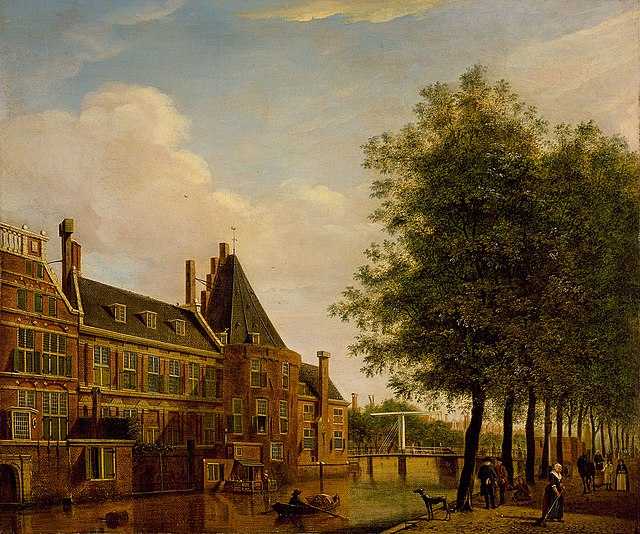Militia Company of District II under the Command of Captain Frans Banninck Cocq, also known as The Shooting Company of Frans Banning Cocq and Willem van Ruytenburch, but commonly referred to as The Night Watch, is a 1642 painting by Rembrandt van Rijn. It is in the collection of the Amsterdam Museum but is prominently displayed in the Rijksmuseum as the best-known painting in its collection. The Night Watch is one of the most famous Dutch Golden Age paintings. Rembrandt's large painting is famed for transforming a group portrait of a civic guard company into a compelling drama energized by light and shadow (tenebrism). The title is a misnomer; the painting does not depict a nocturnal scene.
The Night Watch
17th-century copy by Gerrit Lundens with lines added indicating the areas cut down from the original painting in 1715
The Night Watch as it hung in the Trippenhuis in 1885, by August Jernberg
The painting during restoration measures (Operation Night Watch), October 2019
Rembrandt Harmenszoon van Rijn, usually simply known as Rembrandt, was a Dutch Golden Age painter, printmaker, and draughtsman. He is generally considered one of the greatest visual artists in the history of art. It is estimated Rembrandt produced a total of about three hundred paintings, three hundred etchings, and two thousand drawings.
Self-Portrait with Beret and Turned-Up Collar (1659)
Latin school at Lokhorststraat 16, Leiden
Rembrandt lived at Amstel river almost next to Kloveniersdoelen where the Night Watch was exhibited for years; painting by Jan Ekels the Elder (1775)
Rembrandt's house at Jodenbreestraat by Cornelis Springer (1853); in the back the Zuiderkerk where his children were buried








